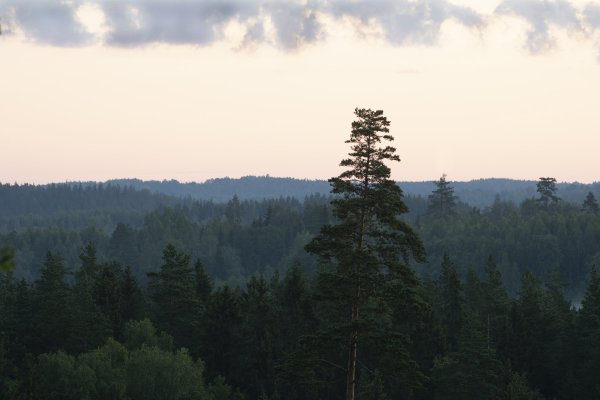How Climate Change Affects Latvia's Forests
Widespread and devastating forest fires are among the most worrying messengers of climate change. However, the impact of climate change is largely determined by the country's location on the world map. Latvia's forests are also affected by global change, but the risks, unlike in the south, are different.
Heavy storms
While the effects of severe heat-induced, quite radical climate change are predicted in the southern lands, scientists have found that strong winds and even storms are the biggest risk that could significantly affect Latvia's forests in the foreseeable future. However, the main changes will not be caused by the frequency of storms, but by the expected increase in wind speed during such storms – gusts. The strength of storms will be different in different parts of Latvia – stronger winds, just like before, are most likely to be expected in Kurzeme. Damage to forest stands is expected to be greater not only due to wind, but also due to other climatic factors, such as higher air temperatures. During the last 100 years, the average air temperature in the territory of Latvia has increased by 1.5 °C. Changes in the annual pattern are not uniform – temperature increases have been observed mainly in the spring months (March, April, May) and winter (December). Between 1851 and 2006, the number of frost days with a minimum daily air temperature below 0 °C fell on average from 140–150 days to 110–120 days. “Warm winters also increase the negative impact of wind. Forest needs good winters with prolonged low temperatures to keep the ground frozen and the trees firmly in the soil. The fewer such days and the shorter the winter, the more likely it is that trees will be more susceptible to wind during storms and wind will cause more damage,” says Āris Jansons, Lead Researcher at the Latvian State Forest Research Institute “Silava”.
A longer vegetation period
Climate change has also affected the growing season. Trees respond to these changes and show them. For example, as compared to less than 100 years ago, both the budding of birch and maple leaves and the flowering of these species and white alder now begin 12–30 days earlier. By the end of the century, the growing season is projected to be about a month longer. One of the unfavourable factors influenced by the longer vegetation period is the spread of root rot fungus. Root rot is a serious infectious tree disease, and the affected trees are more susceptible to both pest damage and wind. If freshly felled tree stumps are infected with spores of root rot fungus, the mycelium of the fungus grows in the roots of the stump and can also infect adjacent trees. A longer vegetation period promotes more active sporulation, which means a faster spread of root rot in the stands.
The European spruce bark beetle
Pests enjoy climate change
As the climate gets warmer, the proliferation of conifer/leaf rodent pests (such as the European pine sawfly) in Europe is expected to increase in frequency and spread to the northern regions in the coming years. Pests can destroy hundreds of hectares of forest. Moreover, the mass multiplication of any pest species can have a very negative effect on all other insect species, which are thus suppressed. “Climate change is contributing to the development of pests, both directly and indirectly. The biggest damage in Latvia is caused by the European spruce bark beetle. As the average annual temperatures increase, the number of generations per year of this insect species may also increase. As concerns other species, for example the gypsy moth, the warm climate reduces their mortality during the winter. In turn, the most common extreme events caused by climate change, such as storms, prolonged droughts, extreme temperature fluctuations, etc., create a large number of trees suitable for the development of the European spruce bark beetle, namely, freshly felled and weakened trees,” says Agnis Šmits, Lead Researcher at the Latvian State Forest Research Institute “Silava”.
Forestry – a mitigator of climate change
Healthy forests have a crucial role to play in combating global climate change, as growing forest stands act as carbon sinks by accumulating carbon dioxide (CO2) and releasing oxygen. Forestry is the only sector that can provide real carbon sequestration, not just reduce emissions. European Union's forests absorb 8.9% of the European Union's total greenhouse gas emissions each year. The more productive forest stands, the higher their CO2 sequestration. One cubic metre of wood as it grows collects a tonne of harmful carbon dioxide and emits 0.7 tonnes of oxygen. The southern part of the world is projected to be more severely affected by climate change, so the role of northern European forestry will increase to maximize the positive carbon footprint of Europe's forests and provide our continent with a local, renewable resource that stores carbon in various ways and products. It is expected that Latvia will be more and more suitable for forestry in the next 100 years, and if properly grown, forest stands will continue to “produce” wood and sequester CO2.




